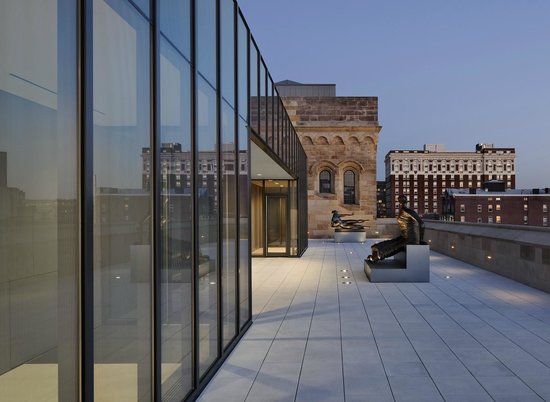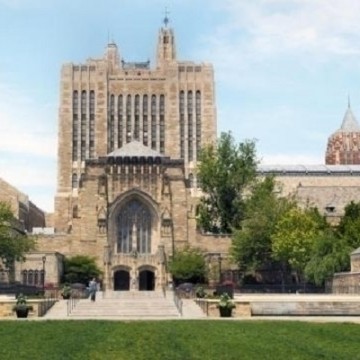Yale University 2012
Contents:

He mentioned studies showing that metformin, which is used for treating diabetes and is currently the most prescribed drug, can reduce cancer risk by selectively killing highly glycolytic pdeficient cancer cells [ 3 ]. Metformin, an indirect activator of AMPK, has been shown to suppress oxidative phosphorylation in the mitochondria, which then causes cells to increase glycolysis rates as an alternative ATP-producing mechanism; however, metformin-treated pdeficient cells are unable to carry out this conversion [ 3 ].
Watson explained that this demonstrates how scientists can work toward stopping cancer by decreasing insulin levels and glycolysis with this diabetes treatment.
- Nanotechnology for Microelectronics and Optoelectronics (Nanophotonics)!
- References!
- Hes So Shy.
- The Great Wing: A Parable About The Master Mind Principle?
- Finders Not Keepers: Yale Returns Artifacts To Peru!
These factors block apoptosis during inflammation and consequently maintain growth when persistently activated in tumor cells [ 4 ]. Watson claimed that more research should be focused on anti-inflammatory drugs to help prevent cancer, mentioning as an aside that he takes ibuprofen every day as a preventive measure.
September 24, Yale University researchers asked scientists to review a job application of identically qualified male and female students and found. [node cck=field_video_embed;]. [node cck=field_video_embed;]. [ node cck=field_video_embed;]. Campus & Community.
Watson alluded to the benefits of taking a daily aspirin or ibuprofen; for example, one study has shown that taking a daily aspirin for at least 5 years reduces cancer risk [ 5 ]. Watson envisions the future of anticancer drugs to be primarily non-toxic chemical agents, such as metformin, as well endostatin and thrombospondin, which are broad-spectrum angiogenesis inhibitors. In this way, he hopes these drugs can be administered in a simple pill, similar to taking antibiotics.
In this way, researchers can utilize an unbiased approach to scan the whole human genome for the appropriate oncogenic factors to target. National Center for Biotechnology Information , U.
Navigation menu
Yale J Biol Med. To whom all correspondence should be addressed: This is an Open Access article distributed under the terms of the Creative Commons Attribution Non-Commercial No Derivatives License, which permits for noncommercial use, distribution, and reproduction in any digital medium, provided the original work is properly cited and is not altered in any way. This article has been cited by other articles in PMC.
James Watson, cancer, Warburg effect, metformin, inflammation, cell proliferation. After World War I, the university returned some of the artifacts, but argued that the school could keep the rest under the laws of the day.
Yale University Commencement 2012
Over time, Peru's demands grew louder. Machu Picchu is an iconic place for the Peruvian people, and the idea of bones and artifacts from Peru being held in the U.
- A Report of the James Watson Lecture at Yale University.
- Climategate: The CRUtape Letters!
- Citation Tools.
In , Peru's government filed a lawsuit against Yale. Negotiations intensified, and a letter from Yale alumni urging their alma mater to return the artifacts helped move the process out of the courts. Peruvian historian Mariana Mould de Pease was happy to avoid the expensive legal route.
Gender bias in science is real, according to Yale study | YaleNews
She says Yale alumni played a key role in "getting this matter where it has to be — in the academic world. In November , Peruvians held a demonstration in Lima demanding that Yale return the artifacts taken by Bingham. The dispute was resolved through two separate agreements. The first, between Yale and the Peruvian government, established that the university would return all of the objects by the end of The second established a partnership between Yale and the San Antonio Abad University in Cuzco to share stewardship of the collection.
The schools will also collaborate on academic research. Keeping the antiquities in a scholarly setting was key, says David Bingham, grandson of the explorer who found them.
Adding Small Differences Can Increase Similarity and Choice
Flescher, of the International Foundation for Art Research, says the focus is back where it should be — on the collection. This story has unfolded over years, during a time of tremendous shifts in attitudes toward cultural patrimony, Flescher says. Back in Cuzco, professors from both schools met to inaugurate the new museum. Among them was Oscar Paredes, who teaches social sciences at the university in Cuzco. He says Peruvian professors are finally on equal footing with their Yale counterparts. And now, alongside the hundreds of thousands of tourists who pass through Cuzco each year to visit the terraced stone ruins of Machu Picchu, the citizens of Peru will be able to see the historic relics many have never seen before.
